
- What is VIA REGIA?
- VIA REGIA - revitalization of
a historical road (an essay) - history of the VIA REGIA (an essay)
- VIA REGIA - ramble through Europe
- VIA REGIA - library
- VIA REGIA - route course
- VIA REGIA - paraphrases on
a historical road - VIA REGIA - picture galleries
- VIA REGIA 2005 - What we are,
we are through others, too
VIA REGIA – Revitalization of a historical road (an essay)
The old VIA REGIA, also called « Royal Road », belonged to the most important roads system of the Early Middle Ages. In written sources,
it appears with different names. In 1252, the “strata regia” was mentioned for the first time in Latin, in a document written by the margrave
Heinrich the Illustrious (1215/16-1288) for the bishopric of the town of Meißen. The German name “Hohe Straße” (High Road) reappeared between
the 15th and the 16th century: at that time it was the name of the road's section between Frankfurt am Main (Germany) and Wroclaw (Poland) in the
German-speaking region. But the history of the VIA REGIA in Europe surely began before the time of Jesus Christ.
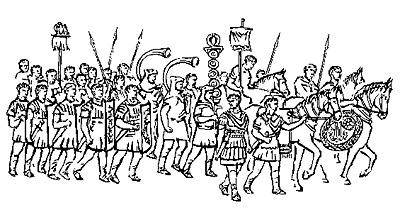 At the time when Gaul was occupied by Romans
, there were stable provision roads between Paris (Lutetia) and the South of France, which were used later by the Franks.
In Western Europe, the “road” connected the capital cities of the partial kingdoms formed after the death of the king of the Franks,
Clotaire I., that is to say Reims, Soissons, Paris and Orleans.
At the time when Gaul was occupied by Romans
, there were stable provision roads between Paris (Lutetia) and the South of France, which were used later by the Franks.
In Western Europe, the “road” connected the capital cities of the partial kingdoms formed after the death of the king of the Franks,
Clotaire I., that is to say Reims, Soissons, Paris and Orleans.
The development of the VIA REGIA in the eastern part of its geographical centre was the result of the formation of the Thuringian
kingdom in the 5th/6th centuries. After the Thuringian kingdom’s fall in 531/534, the territory through which the road passed was under
Merovingian domination. Until the second quarter of the 10th century, Thuringia shared a border with the area being progressively colonised
by the occidental Slavonic families. That is why this area had a particular strategic and economic meaning for the Franks. It involved
the progressive, but inevitable, realization of a network of trails and roads, which allowed lords to do all the seigneurial works in the
fastest and surest way.
From the fall of the Roman Empire, there was continual development of a first East-West road. This development is certainly linked, in the
Eastern part of it, to the formation of the Kievan Rus and to the interests of the princes Vladimir the Holy and Yaroslav the Wise, and in the Western
part of it, to the expansion of the Franks' kingdom to the East and to the South.
Two events were particularly important in Europe's history:
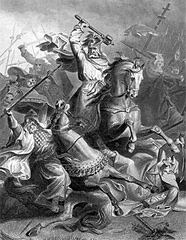
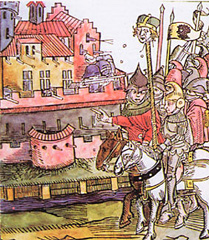 in Western Europe, the military expeditions of Karl Martel against the Arabs who were in Spain, by Tours and Poitiers, in 732 and in Eastern Europe,
the battle of the German-Polish knights' army against the Mongols in Legnica, in 1241. Both of these events were closely connected with the origins of
the road VIA REGIA and they both stopped the conquest of the young Europe by non-European cultures for a long time.
in Western Europe, the military expeditions of Karl Martel against the Arabs who were in Spain, by Tours and Poitiers, in 732 and in Eastern Europe,
the battle of the German-Polish knights' army against the Mongols in Legnica, in 1241. Both of these events were closely connected with the origins of
the road VIA REGIA and they both stopped the conquest of the young Europe by non-European cultures for a long time.
Together, the political relations that already existed in the Early Middle Ages between the European countries, the long-distance trade that rapidly
developed, starting in the 10th century, the pilgrimage that was the main form of far travels in the Middle Ages and countless military expeditions
to acquire spheres of power and influence permitted the growth of VIA REGIA’s importance over centuries. Particularly interesting is the Polish and
Ukrainian section of the “road” because not only the importance of urban centres like Wroclaw, Krakow, Lviv or Kiev is expressed, but also the thousand
year long history of these peoples, changing and often bringing sorrow in these regions, is connected with the events along the VIA REGIA.

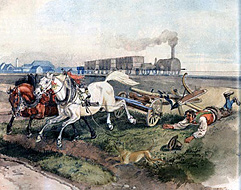 According to written sources, the history of the old VIA REGIA as a military road begins with the Franks’ invasions and ends curiously with a
French campaign.
According to written sources, the history of the old VIA REGIA as a military road begins with the Franks’ invasions and ends curiously with a
French campaign.
The last time that this road had a European significance was when Napoleon's army used it as their way for the conquest of Russia and Spain but
also as their way of return. Between the Franks and Napoleon, 1500 years of European history took place, which are closely connected with the
VIA REGIA.
With the construction of the railroad in 1835, roads began to lose some of their importance. People, who had principally walked on the roads until
then, had the new possibility to travel faster on these ways by train and also to go farther. The transportation of goods was not as painful on
the trains as on the bad roads that were rarely prepared for long-distance traffic anyway. During the following years, industrialisation promoted
the fast construction of rail roads. Trains were a suitable means of transport for industries' heavy transportation as well as means of supplying
rapidly growing towns and cities with needed resources. Although streets began to be paved in the 12th/13th century in a few cities, the
largely undeveloped road conditions and the absence of suitable transportation means led to a decade-long neglect of the
whole roads system.
In the framework of this development, there were new changes in the roads' courses. The VIA REGIA’s course has changed many times over
the past centuries. As the greatest part of East-West trade already took place on this road in the Middle Ages, every sovereign wanted the road
on his territory, because the income from escort rights and duties was substantial. Only a few points, fixed by nature, like river crossings and
mountain passes or combs for example, were the same for a long time. Therefore, the course of the road, frequently changing with the time, is also
a reflection of the changing political relations. At the same time, economic and technical changes marked the image and the course
of the VIA REGIA.
This historical road recently became the linear way of the modern highway and is today a pathway toward the realization of individual mobility.
Technically, it became a high-tech asphalt line that cuts landscapes and settlement spaces, and that enables safe travel for individuals, but only
with the use of considerable technical means. The new portion of the highway A4 that was built in the new Bundesländer, is a model of
engineering performances in Germany if one considers the aspects of security and mechanization. The most modern communication and information
technologies were used in order to control and to coordinate the road safety. Countless high-mechanized anti-traffic jam and anti-accident
measures were introduced on the highway, measures that enable, for the first time, fluid circulation in this intensive traffic volume. In order
to fulfil both human and car maintenance needs, rest areas with gas stations and parking plots were built. The stay on a rest area is so organised
and so mechanized that one can get everything almost without saying any word. Comfort and speed of cars are so advanced that there is no more
necessity to look for an accommodation on the road. Travellers are often under time constraints and quickly leave rest areas or sleep in their
own vehicles.
In these circumstances, can the highway bring together cultures and peoples as the old VIA REGIA did?
Can the road still mean “life”?
Today, people are said to be mobile. Before, it was not particularly different. Being on the road meant trade, wars, weddings…
People were never alone on the road. Until the 19th century, it was safer to be part of large groups in order to travel
in less dangerous conditions. One always had the possibility to communicate with, to meet and to get to know other people. As travellers
was curious about, interested in, and often dependent on other people, they often used their limited knowledge of foreign languages and
collected on-the-road learning experiences.
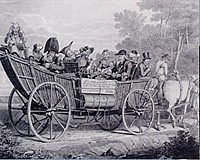
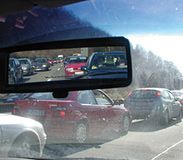 This meaning of the road belongs to history.
This meaning of the road belongs to history.
But the VIA REGIA, either the route of Bonifacius, creator of the bishopric in Hesse and Thuringia and thus, creator
of stable political and religious structures under the order of Karl Martel and Rome, or the future six-lane highway A4,
is a “major European road” with a crucially economic, cultural, political and military importance. It has been full of
life and has borne a great deal of community symbolism since around 2000 years ago.
 back to top
back to top

